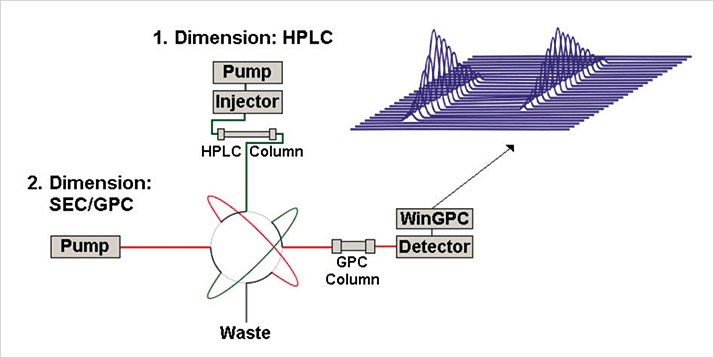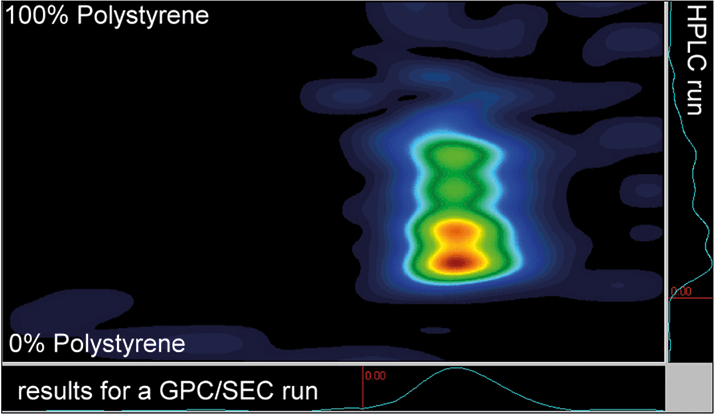Blockcopolymers such as SBS (Styrene-Butadiene-Styrene) are an important product class and a typical example for complex polymers. Special for copolymers is that in addition to the molar mass distribution also a chemical composition distribution may be present. While GPC/SEC is the established method for the determination of molar mass averages and distribution, gradient HPLC can be applied to separate based on chemical composition. Gradient HPLC can be hyphenated with GPC/SEC in a fully automated setup to measure both distribution simultaneously with a high peak capacity and to detect differences in batches (cf. Fig 1).


All experiments were performed on PSS SECcurity 2D polymer analysis equipment using the following conditions:
Eluent 1st dim.: n-Hexane/THF p.a. gradient
Column 1st dim.: PSS Si-60 5 μm
Flow-rate 1st dim.: 0.1 mL/min
Injection volume: 20 μL
Transfer: 2D tandem transfer valve with two 100μL loops
Eluent 2nd dim.: THF p.a.
Column 2nd dim.: PSS HighSpeed SDV 5 μm, 10 000 Å
Flow-rate 2nd dim.: 6.25 mL/min
Detection: SECcurity VWD 1260 UV @ 254 nm
Calibration: PSS Polystyrene ReadyCal
Standards, PSS Polybutadiene standards
Data System: PSS WinGPC UniChrom
The online combination of gradient HPLC and GPC/SEC increases the peak capacity of the separations and allows to look behind peaks which cannot be separated by either method alone. The HPLC conditions are selected to separate according to Polybutadiene content.

Fig. 2 shows the contour plot for a thermoplastic elastomer that shows one narrow main peak in GPC/SEC. However, 2D separation reveals that 4 different compositions are present that co-elute in the GPC/SEC experiment. The species differ in composition and Polybutadiene content. The color code indicates the concentration of each peak. Simultaneous molar mass results and composition results can be measured using the calibrated GPC/SEC and HPLC axis.
http://www.pss-polymer.com/products/lc-instruments-and-detectors/2dpolymeranalyzer/

